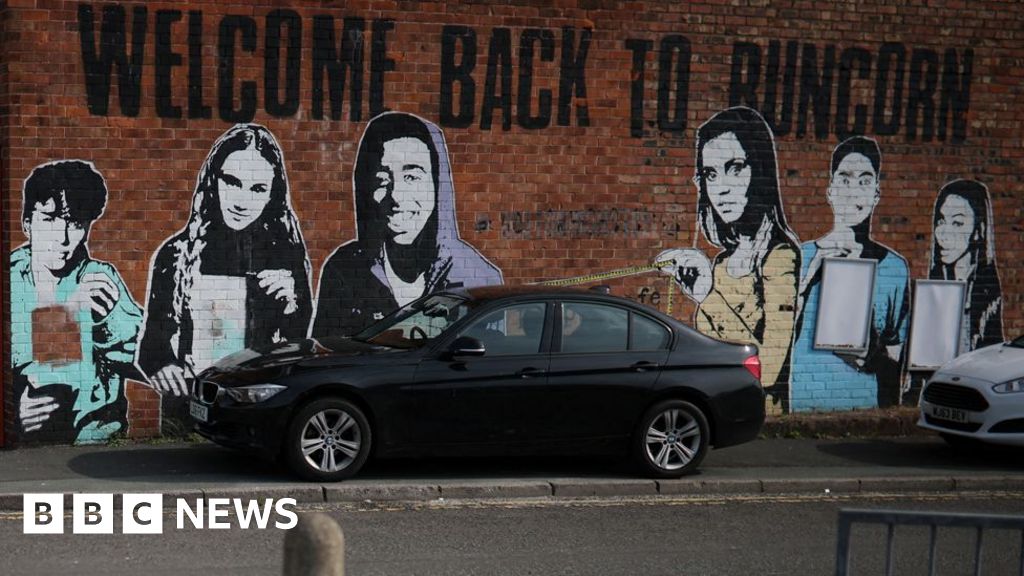Israeli Defence Minister Endorses Permanent Military Presence in Gaza

An Israeli army vehicle was spotted in the Gaza Strip as viewed from southern Israel on January 16, 2025, marking a significant shift in military strategy.
The prospect of a prolonged Israeli occupation of the Gaza Strip is becoming increasingly feasible. On April 16, Israeli Defence Minister Israel Katz publicly endorsed the idea of maintaining a permanent military presence in specific sectors of the enclave. This announcement comes as Israel continues to tighten its grip on Palestinian territories, especially after the recent escalation in conflict.
Katz stated, The army will remain in the security zones as a buffer between the enemy and the [Israeli] communities in any temporary or permanent situation in Gaza as in Lebanon and Syria. His comments also underscored the continuation of a blockade on humanitarian aid that has been in place since March 2, further complicating the humanitarian situation in the region.
In a tweet last December, Katz had expressed that after the elimination of Hamas's military and governmental capabilities in Gaza, Israel would maintain security control over the territory, allowing for complete freedom of action. This approach marks a significant departure from previous policies on military engagement and territory control.
Military historian Tewfik Hamel commented on this drastic shift, stating, The fact that the Israeli army no longer vacates conquered areas indicates a break from earlier strategies. However, the consequences of a permanent Israeli army presence are extensive and troubling. It could exacerbate the already critical humanitarian crisis and lead to prolonged instability in the region.
Since the collapse of a two-month ceasefire with Hamas on March 18, the Israeli military has significantly amplified its presence in the enclave. Notably, on April 13, the Israeli government announced the establishment of a new military corridor in the south, known as the Morag corridor, which connects the southern cities of Rafah and Khan Yunis. This development effectively isolates Rafah, which is located near the Egyptian border. In addition, the military regained control of the Netzarim corridor, further severing Gaza City from the rest of the territory.
The ongoing division of Gaza as of April 16, 2025, has resulted in an expanded buffer zone adjacent to the Israeli border. Prior to the Hamas terrorist attacks on October 7, 2023, this buffer zone was approximately 300 meters wide. It has now been widened to an average of one kilometer, creating a vast no-man's-land in the already narrow Palestinian territory.
According to a report published by the Israeli NGO Breaking the Silence on April 7, this buffer zone now constitutes more than 15 percent of Gazas total area and 35 percent of its agricultural land, rendering it completely off-limits to Palestinians. The NGO describes this area as a death zone of enormous proportions, alleging that soldiers were instructed to systematically eliminate anything within the designated perimeter.
The ongoing evacuation orders and the vast territories rendered uninhabitable have plunged the Gazan population into a state of perpetual insecurity. The United Nations Office for the Coordination of Humanitarian Affairs (OCHA) reports that 66% of Gazas territory is classified as no-go areas or is subject to displacement orders.
Gaza, already one of the most densely populated regions in the world, is seeing its livable area diminish rapidly, with three-quarters of its civilian infrastructure having been destroyed. Amande Bazerolle, an emergency coordinator for Mdecins Sans Frontires (MSF) in the enclave, stated, We are witnessing in real time the destruction and forced displacement of the entire population of Gaza.
Bazerolle emphasized that the humanitarian response is struggling significantly due to insecurity and critical shortages of supplies. The UN estimates that approximately 500,000 Palestinians have been displaced in just one month.
Officially, Israels strategy to partition the territory aims to exert maximum pressure on Hamas to negotiate a new truce agreement that includes the release of hostages and the disarmament of the organization, all while allowing Israel to continue its military operations unhindered. Prime Minister Benjamin Netanyahu remarked on Monday during a visit to the White House that we are dissecting the [Gaza] Strip and increasing the pressure step by step, so that they [Hamas] will return our hostages.
On the ground, Israeli soldiers have encountered minimal resistance, suggesting that Hamas might be in the process of withdrawing, reorganizing, or altering its tactics in response to the military pressure. Hamel noted, The current lack of resistance does not guarantee a quick victory, nor does it imply the absence of future confrontations.
The toll on civilians has been staggering since the resumption of Israeli airstrikes. On Tuesday, the Hamas Ministry of Health reported that at least 1,630 Palestinians have been killed since March 18, bringing the total death count in Gaza since the conflict began to a catastrophic 51,000.
The prospect of a prolonged and uncertain occupation is now a reality. Reports from the Associated Press indicate that Israel currently controls about half of the Gaza Strip, while the Israeli army claims to have converted approximately 30 percent of the enclave into a security perimeter. This suggests a potential long-term takeover by Israel, especially as far-right factions within the Israeli government have expressed their desire to recolonize the enclave since the October 7 attacks.
Furthermore, the Financial Times reported that the military has proposed a plan to the government for a sustained occupation, which would involve relocating Gazas two million residents into camps by the sea. This strategy aims to empty urban centers and reduce the risks faced by Israeli soldiers from guerrilla warfare. Humanitarian aid would be completely controlled either by the military or authorized NGOs to prevent Hamas from seizing it.
Hamel commented on the complexities of a prolonged occupation, stating, While the Israeli army has the resources and technology to occupy Gaza, a sustained presence requires ground troops, which can be costly in terms of human and material resources. Thus, a prolonged occupation remains uncertain, while a scenario involving an army presence in strategic areas to ensure Israels security seems more plausible.
Resistance to the Israeli hawks' plans is emerging from within the ranks of army reservists, many of whom have recently spoken out against the Gaza offensive in media and on social platforms. They express exhaustion from extensive periods of active service over the past year and a half, with critics claiming that an all-out military strategy has reached an impasse. Despite this, Netanyahu and his far-right allies continue to staunchly defend the current military strategy.
Public opinion in Israel is also shifting, with a survey from the Israel Democracy Institute revealing that 68 percent of Israelis believe the governments primary focus should be on the return of hostages, a rise from 62 percent in September, rather than solely on the destruction of Hamas.
The position of the Trump administration, which has a history of favoring rapid resolutions, remains uncertain. President Donald Trump might grow impatient with a conflict that threatens to harm his relations with key Arab nations like Egypt and Saudi Arabia, both of which are crucial for regional stability and the ongoing fight against Iran.
This article was translated from the original French version by David Howley.

























